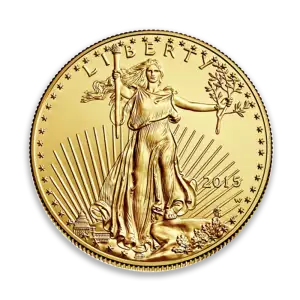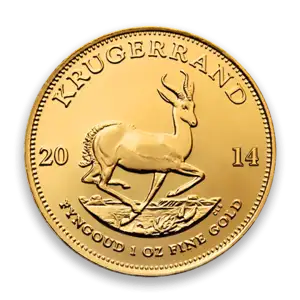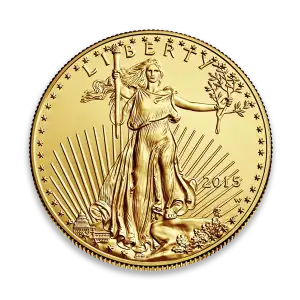Ancient Coins: Lydian Gold Considered First Coins in the World
The First Official Coin
Natural resources are often a source of great wealth for a country, especially its king. The Pactolus River in Lydia (now part of modern-day Turkey) was one of the most significant sources of electrum in the ancient world, and it allowed the kings to amass a substantial fortune by minting coins from these deposits.
According to mythology, the electrum came from King Midas who bathed in the river to try to wash away his curse, which turned even his food into gold. In actuality, the persistent wealth of the region was due to its ability to mine and leverage its natural electrum in its prominent position as a trading center between Mesopotamia and the Greek cities.
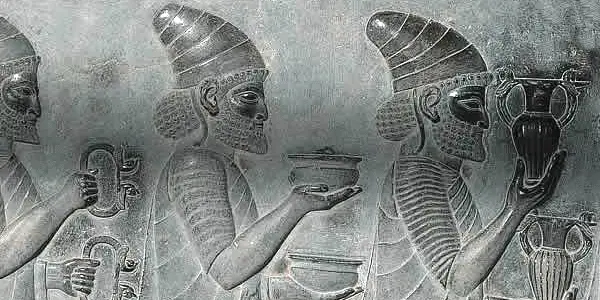
Lydia was noted by ancient authors as a significant center of commerce, and it was the first to establish retail shops in permanent locations. Despite their prominence, much of their history is unknown or inconsistently written.
Their coinage began with the kings Sadyattes and Alyattes. This particular coin is of the earliest variety of Lydian coins, most commonly dated to 630-620 BCE during the reign of Sadyattes. It is dramatically rarer than the subsequent issues, minted during only a short period and with few dies. This coin is atypically well-preserved, in mint state with complete remaining luster, whereas nearly all known examples grade “very fine” or lower.
Although its weight indicates that its denomination is a trite, one-third of a stater, no full staters have ever been found from this period, meaning that the trite was likely their largest denomination. There is some disagreement as to the value of a Lydian trite in antiquity, but it is generally thought to represent about one month’s salary, although there is evidence to suggest it was worth more, perhaps able to purchase up to 11 sheep.
While remaining a topic of debate by some, this type is now commonly considered to be the first official coin, meeting all of the requirements laid out in the dictionary definition: it is the first coin to have certified markings that signify a specific exchange value and be issued by a governmental authority for use as money. Earlier coins like the striated and geometric types failed to clearly meet the final criteria, whereas the lion was consistently associated with Lydia.
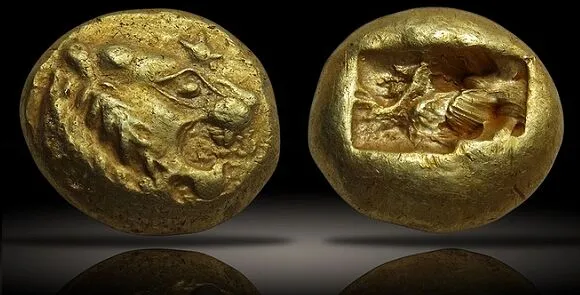
KINGS of LYDIA. temp. Sadyattes. Circa 630-620 BCE. EL Trite – Third Stater (13mm, 4.70 g). Sardes mint.
In antiquity and today, lions have been symbols of kings, ruling their domain and personifying royal authority, strength, and protection. The archaic style of this lion is particularly captivating, shown with teeth bared and roaring, with a fierce, triangle-shaped eye.
The lion was also considered a personification of the sun itself, as it was believed that lions could look directly into the sun. The zodiac sign Leo was therefore assigned to the hottest part of the year, from July 22 to August 22. Appropriately, shown above the lion’s head is a depiction of the shining sun. Later varieties devolve stylistically, and some interpret the less obvious sun pattern as a wart on the nose of the lion.
After the death of King Alyattes, his son Croesus ascended the throne and ceased minting the Lydian lion trites in favor of introducing the world’s first bi-metallic coinage. The expression “rich as Croesus” originates from this king and is still in use today, some 2,600 years after he minted his coins.

